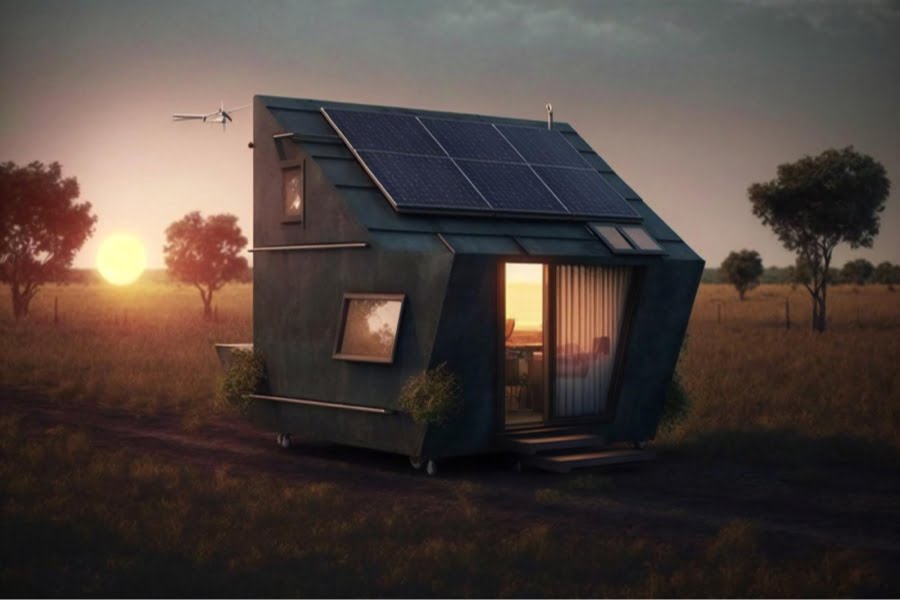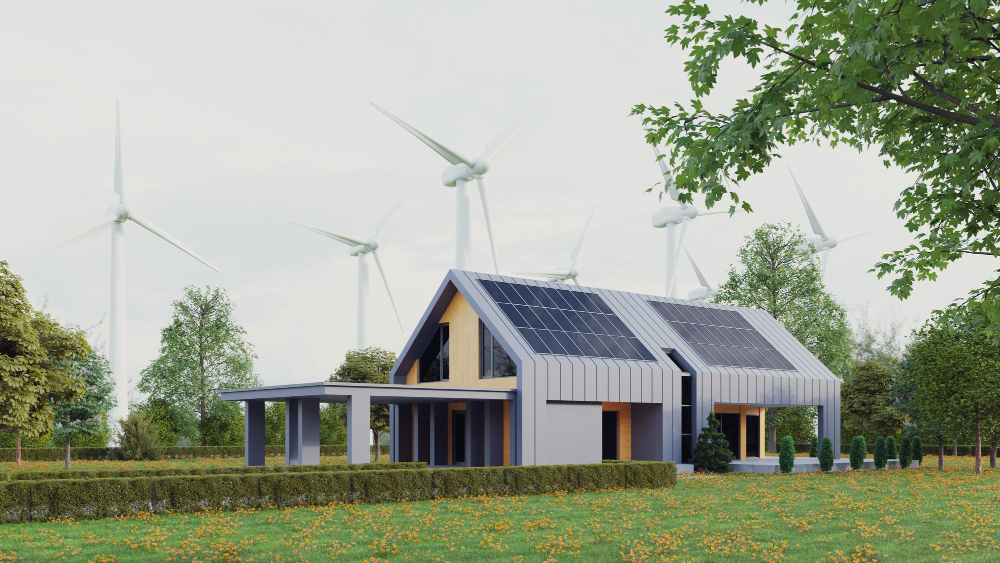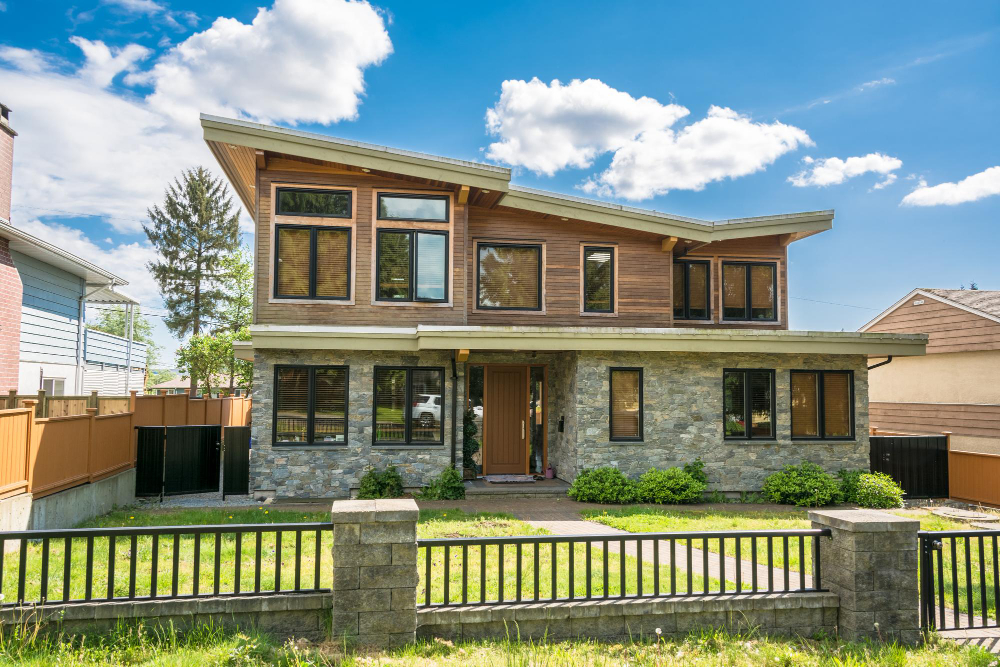Last updated on
Holistic home design is more than a trend; it’s a lifestyle choice that echoes the contemporary desire for balance and mindfulness. In a world overflowing with options, how do we craft a living space that’s not only stylish and comfortable but also sustainable? The pursuit of a harmonious home that embodies all three facets is no longer a distant dream but a tangible reality.
In this guide, we’ve curated nine empowering tips to inspire your next design adventure, weaving together aesthetics, functionality, and eco-friendly wisdom. Whether you’re redecorating or building from scratch, these insights will serve as your compass, leading you to a home that truly resonates with your values and aspirations.
Choosing Eco-Friendly Materials

When it comes to holistic home design, the selection of eco-friendly materials is a vital component. This decision signifies a commitment to the environment, balancing aesthetics with responsibility.
- Renewable Flooring Options: Bamboo flooring is an excellent example of an eco-friendly material. It’s a renewable resource that grows much faster than traditional hardwood, offering a stylish yet sustainable choice.
- Recycled Glass Countertops: Recycled glass countertops are innovative and attractive. By reusing glass that might otherwise end up in landfills, you create a unique and environmentally-conscious design feature.
- Healthier Paint Choices: Low-VOC (Volatile Organic Compounds) paints reduce harmful chemical emissions. By selecting these paints, you contribute to a healthier living environment inside your home.
- Organic Fabrics for Soft Furnishings: Organic fabrics like cotton, hemp, or linen for curtains, cushions, and upholstery can add natural elegance. Grown without harmful pesticides, these fabrics align with eco-friendly principles.
Eco-friendly materials don’t mean a compromise on style or quality. Many sustainable products are both durable and beautiful, reflecting an intelligent and thoughtful design approach.
Integrating Natural Light

Natural light’s impact goes beyond mere visual appeal. It offers tangible health benefits, including improved mood and increased energy levels. By embracing sunlight, you create a home that fosters both physical and emotional well-being.
- Windows: Strategically placing windows can dramatically increase the influx of natural light. Consider large, open windows or even skylights to invite the sunshine in. Selecting the right type of glass, such as double-glazed or tinted, can also enhance light without compromising energy efficiency.
- Reflection and Distribution: Mirrors and reflective surfaces can help distribute natural light throughout a room. By positioning mirrors across from windows, you amplify the light’s reach, illuminating darker corners without the need for artificial lighting.
- Outdoor Connections: Creating a seamless flow between indoor and outdoor spaces can maximize natural illumination. Consider large glass doors that lead to a garden or patio, allowing light to flood in and connect the home to the natural world.
- Shades and Blinds: The control of natural light is equally important. Well-designed shades and blinds allow you to modulate the light’s intensity, providing comfort and privacy while maintaining the connection with the outdoors.
With these strategies, you can create spaces that glow with natural beauty, enhance well-being, and celebrate a harmonious connection with nature.
Energy-Saving Appliances

Energy-saving appliances are a critical aspect of modern, responsible home design. By working closely with an experienced home builder, homeowners can focus on efficiency. Choosing products that consume less energy can significantly reduce their ecological footprint and monthly utility bills.
Energy-efficient options exist for almost every household appliance. Here’s how to explore these alternatives:
- Refrigerators: Look for models with an Energy Star rating. Modern energy-saving refrigerators use high-efficiency compressors, better insulation, and more precise temperature controls.
- Washing Machines: Front-loading washing machines typically use less water and energy. They clean clothes effectively while being gentler on fabrics.
- Dishwashers: Newer dishwasher models often have eco-friendly cycles that use less water and energy. They still deliver sparkling clean dishes.
- Ovens and Stovetops: Induction cooktops offer precise control and consume less energy. Convection ovens cook food evenly and can reduce cooking times, thus saving energy.
- Smart Features and Automation: Smart appliances can be controlled through apps or smart home systems. You can set schedules, monitor energy usage, and receive maintenance alerts. This technology adds a layer of convenience and control over energy use.
Regular maintenance ensures that your appliances continue to function efficiently. Simple actions like cleaning filters and seals, or regular professional servicing, can make a big difference in energy consumption.
Using Plants for Freshness

Bringing plants into your home serves multiple purposes. In addition to being decorative, plants add freshness to your living spaces. They purify the air and contribute to a lively and vibrant environment.
- Selecting the Right Plants: When selecting the right plants, consider their varying effects and requirements. Air-purifying plants like spider plants and snake plants clean the air. Humidity-loving plants like ferns and peace lilies are suitable for bathrooms. Edible plants like basil or thyme can be grown in the kitchen.
- Placement Strategies: Placement strategies also matter. Succulents or cacti can enhance sunny windowsills. African violets or bonsai trees can be decorative features on shelves or tables. Hanging baskets with plants like ivy create appealing vertical elements.
- Care Considerations: Proper care ensures plants remain fresh. Understanding each plant’s water and light needs is essential. Using the right soil and occasional fertilizing support healthy growth and vibrancy.
By carefully selecting, placing, and caring for them, your home becomes more inviting and lively. The careful choice and arrangement of plants provide tangible benefits that enhance your living environment.
Smart Water Usage
Water is one of our most precious resources, and smart water usage is becoming a vital aspect of responsible living. Here’s how you can make the most of this valuable resource in your home.
- Understanding Your Usage: Start by monitoring your water usage. Consider installing a water meter or using apps that track consumption. Being aware of how much water you use helps you identify areas for improvement.
- Fixing Leaks: A small drip from a leaky faucet can waste gallons of water over time. Regularly check for leaks in your pipes, faucets, and other water fixtures. Fixing them promptly can save a significant amount of water.
- Smart Irrigation: If you have a garden, consider using drip irrigation or soaker hoses. These systems target the root of plants, reducing water waste. Watering during the early morning or late evening can also minimize evaporation losses.
- Collecting Rainwater: Rain barrels or other rainwater harvesting systems can be a great way to collect water for outdoor use. You can use this collected water for gardening or washing outdoor areas, conserving your tap water.
- Mindful Behavior: Daily habits can influence water conservation. By simply turning off the tap when brushing teeth or shaving, reducing shower time, and running full loads in the washing machine, you can save water with ease.
Smart water usage is not just about installing new technology; it’s about a conscious effort to use water wisely. Making these changes not only saves money but also contributes to a more sustainable and responsible lifestyle.
Efficient Heating and Cooling
The right heating and cooling system can make your home comfortable while saving energy. Here’s a guide to make those systems work efficiently.
- Choose the Right System: When picking a heating or cooling system, consider the size of your home. Systems that are too large or small can waste energy. Look for products with a positive energy-saving rating, which means they meet energy efficiency guidelines.
- Regular Maintenance: A well-maintained system runs more efficiently, so it’s important to clean or replace filters regularly. Dirty filters make systems work harder, using more energy, which is why professional servicing is recommended annually to ensure everything is in top shape.
- Use a Programmable Thermostat: A programmable thermostat lets you set the temperature for different times of the day. It can lower the heat or air conditioning when you’re not home, saving energy.
- Insulate Your Home: Good insulation keeps your home warm in winter and cool in summer. Check doors, windows, and walls for drafts. Sealing gaps and adding insulation helps your system run more efficiently.
- Use Fans and Natural Ventilation: Ceiling fans can distribute air evenly, making heating or cooling more efficient. On mild days, opening windows instead of using air conditioning can save energy.
- Smart Habits: Simple behaviors can also make a difference. Lowering the thermostat by a degree in winter or raising it in summer can reduce energy bills. Closing doors to unused rooms helps concentrate heating or cooling where needed.
Efficient heating and cooling is about making thoughtful decisions. These practices can lead to savings and support a responsible approach to energy use.
Personalized Art Selection
Personalizing your art selection can bring life and personality to your living space.
- Know Your Taste: Understanding what you like is the first step. Do you prefer abstract, traditional, modern, or something else? Identify what speaks to you. Spend time exploring galleries, websites, or even social media to find inspiration.
- Consider Your Space: Think about the room where the art will live. What are the colors, furniture style, and overall vibe? Selecting art that complements these aspects can create harmony in your space.
- Mix and Match: Don’t be afraid to mix different styles, sizes, and formats. You can combine paintings, photographs, sculptures, and more. The variety can add depth and interest to your collection.
- Support Local Artists: Look for local artists whose work you admire. Supporting them not only brings unique pieces into your home but also helps your local art community.
- Framing Matters: Frames can enhance or detract from art. Choose frames that suit the piece and the room’s decor. Sometimes, a simple frame is all that’s needed.
- Where you display art matter: Choose eye-catching places to display your art. Hanging it on the wall is not enough. Try unique spaces like floating bookcases, shelves, or racks.
Select art that means something to you. Maybe it’s a painting of a place you’ve visited or a piece that evokes a cherished memory. Personal connections make art more meaningful. Lastly, trust yourself. If something catches your eye and you can’t stop thinking about it, it’s probably meant to be in your space.
Investing in Quality Over Quantity
Selecting high-quality materials and furnishings brings long-term advantages. These items often stand the test of time, resist wear and tear, and maintain their aesthetic appeal for years to come.
- Quality Furniture: Investing in well-crafted furniture not only enhances the beauty of a home but also adds functionality. Look for pieces that use solid construction, premium materials, and timeless design.
- Materials That Last: Choosing durable materials like natural stone or hardwood can be an upfront investment but will pay off in longevity. They provide a robust foundation that retains its charm and utility.
- Art and Accessories: Quality doesn’t stop at large pieces. A thoughtful selection of art and accessories, such as hand-crafted pottery or original paintings, can add a personal and high-quality touch to any room.
- Environmental Considerations: Investing in quality often aligns with sustainability. Well-made products generally last longer, reducing the need for replacements and minimizing waste. Consider manufacturers who adhere to eco-friendly practices.
- Financial Perspective: While quality investments may require a higher initial outlay, they often prove to be cost-effective in the long run. By choosing items that last, you reduce the ongoing expense of replacements.
Investing in quality over quantity is more than a mere design decision. It’s a reflection of values, emphasizing care, consideration, and appreciation for craftsmanship.
Embracing Minimalism
Minimalism is a lifestyle choice that emphasizes simplicity and focuses on what’s essential. Here’s how you can begin this journey:
- Start Slow: Take one step at a time. Start with one room or area and remove items that you don’t need or love. This careful approach helps you make thoughtful decisions.
- Keep Surfaces Clear: A clean surface gives a sense of calm. Keep counters, tables, and desks free of clutter, storing items in drawers or cabinets.
- Use Functional Furniture: Select furniture that serves more than one purpose. A sofa bed, for example, saves space and offers flexibility.
- Mind Your Decorations: Choose decorations that are meaningful and enhance your space without overwhelming it. A few well-chosen pieces can make a strong statement.
- Implement a ‘One In, One Out’ Rule: When you buy something new, consider letting go of something else. This practice helps maintain balance and prevents accumulation.
Minimalism is personal. Think about what’s important to you, and let those values guide your choices. It isn’t about restriction; it’s about freedom and focus. Enjoy the process and notice how it positively impacts your life.
The Takeaway
Embracing holistic home design is a journey toward a harmonious living space that balances comfort, style, and sustainability. Each step, whether big or small, leads you closer to a home that resonates with your values, nourishing both the environment and your well-being.
Your next design adventure awaits, filled with opportunities to create a dwelling that truly reflects the essence of mindful and responsible living.
Related reading:
Table of Contents





